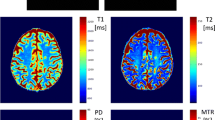Abstract
The characteristics of transverse magnetisation decay of 120 longstanding lesions and 40 regions of normal-appearing white matter have been analysed in 40 patients with multiple sclerosis (MS) and 10 normal controls. Fifty lesions showed a biexponential decay in which two water compartments – one probably intracellular, the other extracellular – could be defined. There was a higher frequency of biexponential lesions in patients with a primary progressive course but no significant difference between benign and secondary progressive groups. Seventy lesions showed a monoexponential decay, of which 31 showed a T2 of greater than 200 ms, implying that these lesions were predominantly composed of extracellular rather than intracellular water. The results imply that an expanded extracellular space within chronic MS brain lesions is a common finding at all levels of disability and disease course. In so far as an expanded extracellular space implies axonal loss, the results suggest that the latter occurs commonly in longstanding MS lesions. The lack of correlation with disability suggests a limited role for the technique in therapeutic monitoring.
Similar content being viewed by others
Author information
Authors and Affiliations
Additional information
Received: 2 January 1996 Received in revised form: 7 June 1996 Accepted: 5 August 1996
Rights and permissions
About this article
Cite this article
Kidd, D., Barker, G., Tofts, P. et al. The transverse magnetisation decay characteristics of longstanding lesions and normal-appearing white matter in multiple sclerosis. J Neurol 244, 125–130 (1997). https://doi.org/10.1007/s004150050061
Issue Date:
DOI: https://doi.org/10.1007/s004150050061




